- Overview
- Trip Outline
- Trip Includes
- Trip Excludes
- Gallery
- Reviews
- Booking
- FAQ
Highlights
-
-
- An exciting early morning flight from Kathmandu to the Himalayan town of Lukla.
- Trek to Mt. Everest's base camp, the world's highest summit.
- Take in breath-taking views of Mount Everest, the Khumbu Glacier, and the Khumbu Icefall.
- Discover the authentic Sherpa culture and way of life.
- Take a walk through the deep forest and rich greenery of the region, which includes large rhododendron trees.
- From Kalapatthar, take in the breath-taking views of the dawn.
- Visit Tengboche, the biggest Buddhist monastery in the Everest area.
- Pay a visit to the well-known Sagarmatha National Park, which has been designated a UNESCO World Heritage Site.
-
THE ADVANTAGES OF BOOKING WITH ROYAL NEPAL GROUP
-
-
- Private automobiles arrive and depart from all airports (for both international and domestic flights)
- Services for first-aid kits.
- As needed, Royal Nepal Group sleeping bag, down coats, T-shirts, caps, porter duffel bags, city and trekking route maps.
- Service for emergency evacuation (must have emergency evacuation insurance, which will be paid through your travel insurance company after evacuation.)
- An oximeter to evaluate your pulse, oxygen saturation, and heart rate twice a day throughout the climb (essential for recognizing Altitude Mountain Sickness (AMS) symptoms). This contributes to your safety during your travel.
-
WHY GO WITH ROYAL NEPAL GROUP ?
-
- We are always available 24/7 with on-ground support worldwide.
- Local specialists create your itinerary.
- Quick and pleasant customer service.
- Individual attention and care.
- Your security is our main priority.
- We speak various languages fluently (English, French, Spanish and Chinese).
- Award-winning company with rave reviews.
- Royal Nepal Group informs your country's embassy that you are visiting as a guest with us (travellers). In the case of an emergency, your embassy will be able to reach you swiftly.
- We have extensive experience and knowledge of the area.
- We can accommodate and make the trip flexible according to budget and your interest.
- There are no booking fees and no disturbances.
- We accept last-minute reservations.
- We care about the local community and our guides and porters. For your trip, we employ local guides and porters.
Trip Introduction: 12 days Everest base camp trek 2022/2023 with Guaranteed, Low Cost, Traditional, and Historical Trekking in Nepal
Is Everest base camp trek appropriate for you?
For beginners, the trip to Everest Base Camp may be challenging, but reading a description does not portray the complete adventure. Expectations do not always reflect reality. Everyone must try and summon the confidence to do so. There is no age restriction for trekking to Everest Base Camp if you are fit and athletic. This trek is easily performed by people ranging in age from seven to seventy. Children under the age of 14 should hike with family members or hire porters to carry the heavier loads through difficult terrain, because the children will not be able to manage the heavy loads through difficult terrain, and you don't want to have to carry all of their belongings as well as your own. People in their elderly years may take longer to trek since they must be more health conscious in order to finish the trip happily. People with Uric acid or respiratory issues should exercise caution before going on a journey. Everyone must be physically and psychologically prepared before going on the voyage. Working up to being able to walk or hike for 5-6 hours without stopping is recommended.What is the difficulty level of the 12-day Short Everest Base Camp Trek? Can you pull it off?
How should you prepare 12 days Everest base camp trek?
When Is the Best Time to Visit Everest Base Camp?
Outline Itinerary of 12 Days Everest base camp trek
Important Note
- Trip departures are available every day of the year.
- This tour is totally customizable. If you wish to personalize the tour, please contact us.
- This tour is offered as a set departure as well as a private group basis.
- You may book this trip privately whether you are going alone or with your family.
- Got a huge group? We can satisfy all your needs.
- We can collaborate to make it inexpensive.
- We offer online payments and same-day reservations.
Weather and Climate :- Everest Base Camp
The Himalayan climate may be unpredictable even during the finest seasons. The greatest months in the spring will be April and May through the first week of June since the days will be longer and there will be more sunlight hours.
Temperatures can fall below freezing in the morning and at night in regions over 3,000 meters.
The fall season, from September to November, is also ideal for trekking around Everest base camp and other Himalayan places. The days are often clear with magnificent views, and it is a good time to climb the mountain, albeit it is considerably colder in the fall season, with intense cold in the mornings and at night, when daylight is much shorter.
Local Culture and Religion in the Everest Base Camp Area
Sherpas are the indigenous inhabitants of Mount Everest and other upper Himalayan regions; the name "Sherpa" is taken from Tibetan. Sher means east and Pa means people, thus the Sherpa moved from eastern portions of Tibet to Nepal's high Himalayas in the Mid-East and Far Eastern Himalaya mountains.
The Sherpa have been farmers and herders of animals like as cows and yaks for over 400 years. Their strong Buddhist faith and diverse cultures are intertwined, as you can witness while trekking through the villages. Every Sherpa community has a monastery, some of which date back more than 500 years, such as the "monastery of Thame and Pangboche settlements." Thyangboche monastery was considerably older, but it was devastated by fire in 1991 and restored to its original style.
You will pass various prayer walls and religious landmarks such as Stupas (domes) with rows of spinning prayer wheels as you move from village to hamlet. All of this contributes to the true cultural experience of your journey.
Sherpa men were the first mountain trekking guides, and they still draw many people each year.
Trekking Planner Nepal strongly advises and encourages that all customers obtain Travel and Medical Insurance in the event of unforeseen occurrences during their Himalayan journey. World Nomads Travel Insurance can provide Travel & Medical Insurance for your next trip to the Himalayan locations of Nepal.
All our treks, trekking, and tour programs feature itineraries with hotels, lodges, home stays, guest houses, and resorts, as well as camping in certain remote places. However, depending on the customers' fitness, car availability, airport delays, cancellations, inclement weather, and road or trail conditions, some days may be longer or shorter. Trekking Planner asks clients to acquire Travel and Medical Insurance while making a reservation. This is required for all trips and hikes. Insurance should cover personal injury, death, medical expenditures, and repatriation fees in any mode of transportation on emergency evacuation, such as helicopter rescue or air ambulance, as well as luggage coverage for the length of the tour/trek.
Your chosen trip destination may change from the program itinerary in severe situations. We may be compelled to reroute or cancel the trip in exceptional situations owing to political difficulties, rioting, inclement weather, destroyed roads, terrible trail conditions, or the state and condition of the porters. The firm retains the right to cancel the trip owing to unforeseen circumstances beyond our control, such as a lower-than-expected number of travelers for the tours selected. Please be patient with us in this matter, and we will try our best to change the itinerary for the trip as best we can for your convenience.
Accommodations at Everest Base Camp 12 Days Trek
All our treks, trekking paths, and tour programs offer accommodation in hotels, lodges, home stays, guest homes, and resorts on their itineraries. Camping is done according to the itinerary in certain distant regions. Depending on the health and pace of the customers, vehicle availability, aircraft delays or cancellations, unfavorable or terrible weather conditions, roads, or trails, certain trails may take longer or shorter.
As a developing country, as we travel to the Himalayan area, the greenery and population density drop, which is one of the key reasons why we sometimes must sacrifice for the finest services. However, because this is a tourist route, most facilities remain accessible, albeit some may require a sacrifice. For example, 24-hour power, laundry services (because to a lack of warmth and sunlight), internet, fruits, hot showers, toilet commode, room quality, and availability are all available (standard quality rooms are found which are designed for meeting the basic requirements). The trekking planning team, on the other hand, takes every effort to deliver the greatest possible services and amenities.
Trekking to Everest Base Camp: Acclimatization and Communication
One of the most crucial components in completing and enjoying the voyage is adapting to environment, temperature, climate, traditions, cultures, and cuisine. We always bear in mind while planning our routes that we should not rise more than 800 meters in a single day. This may result in altitude sickness and respiratory issues. Slowing down and making stops along the road, on the other hand, helps our body adjust to variations in temperature, weather, and climate. We're not going on a trek to walk all the time, and hiring a guide doesn't mean he or she is leading and you're just following, but asking questions about the local people, their way of life, traditions, and culture is a good way to learn more about the traditions and cultures of the place we're visiting.
Foods and drinks that create bodily and emotional stress, such as diarrhoea, constipation, headaches, anger difficulties, a sense of abuse, and a lack of services, must sometimes be avoided. Visitors should always mention which foods and beverages they are allergic to or do not eat before beginning on a journey and enquiring about available lodgings, as this will aid in formulating a plan B for food and beverages.
Everest Base Camp Trekking - Electricity, Internet, and Battery Recharge
As a developing country, energy facilities are not accessible in certain areas, and even when they are, load-shedding and electricity shortages may occur due to natural or anthropogenic reasons. Carrying a power bank is advised for charging mobile phone, camera, flashlight, and other gadget batteries.
Some establishments demand additional costs to replenish the battery because they purchase or utilize power from other sources. Generators, solar panels, and even private hydropower are being installed. Because of the power as well as the private poles and the amount of money that the locals must invest severely on poles, cables, and internet service providers, the internet demands a particular amount of payment, which varies from location to location and is not applicable everywhere.
Mountain Sickness at High Altitude (AMS)
Mountain altitude sickness may affect anyone. Because of a shortage of oxygen, the reduction in air pressure at high altitude makes breathing difficult. It is more common above 3300m (10,000ft).
The signs and symptoms are as follows:
- Dizziness/headache
- Nausea and vomiting
- Tiredness and Fatigue
- Exhausted yet unable to sleep
- Loss of appetite
- Anger and Stress
To avoid AMS, dress correctly for the temperature, drink enough of water, eat healthily, and move gently. If the body is not feeling well, it is advisable to request relaxation or sleep. Maintain hydration and heed the tour leader's instructions and recommendations on altitude mountain sickness.
Toilet and washing facilities on the Everest base camp trip
Every guest house has a hot shower, which might be in the shape of a shower stall or a bucket of hot water. Please bear in mind that at high heights, there may not be enough hot water for all hikers. Limit the use of hot water unless it is solar heated for environmental reasons. Every lodge offers a washer and dryer, but you must provide your own soap. If the water is frozen, ask your guide to fetch you a bowl of warm water.
In Asian designs, toilets are generally squat. The restrooms are just outside your door. Because you're in the mountains, cleanliness may vary. Toilet paper should not be flushed. Use the trash bin inside the restroom instead.
Itineraries
Day 1
Flight to Lukla (2828m/9279ft) 35m and trek to Phakding (2780m/9121ft) 3-4 hrs walk; walking Distance: 9 km / 5.50 miles
After a good night's sleep and a delicious breakfast, you will meet your guide or office representative.
According to flight time we receive you from hotel and drive to the domestic airport in preparation for a picturesque trip to Lukla.
In Lukla, you will meet the native guide/porters with whom you will continue your trip down the Dudh Koshi River.
Continuing up the route, we arrive at Cheplung (2,700m) and then Ghat (2,530m)
We trek about an hour from Ghat to reach Phakding, a little village. After some time rest wither you can have afternoon rest or walk around the town and visit Monastery.
Dinner and over night stay at Lodge in Phakding
After dinner your guide will explain you your next day plan
Included standard accommodation and meals (Breakfast + Lunch + Dinner), Tea/Coffee
Day 2
Trek to Namche Bazaar (3440m/11287ft) 5-6 hrs walk, walking Distance: 12 km / 7.45 miles
Following breakfast, a briefing about the excursion would be held.
The walk start around 08 in the morning.
We began our journey through a pine forest, heading north to the Benkar valley.
We cross the Dudh Koshi River and continue via the Chumoa and Monjo towns, which serve as the Everest National Park's entry.
We'll stroll beside the Dudh Koshi and Bhote Koshi rivers before crossing a suspension bridge in Jorsale.
A difficult climb awaits us after this till we reach Namche Bazaar. This is by far the busiest Sherpa community in the Everest area. Stay in Namche Bazaar for the night.
Standard lodging and meals (breakfast, lunch, and Dinner), as well as tea and coffee, are included.
Day 3
Rest/Acclimatization day at Namche Bazaar
Today is reserved for leisurely exploration and relaxation at Namche Bazaar.
This is a well-known and prominent village in the Everest or Khumbu region.
This settlement resembles a little world. There are government offices, ATMs, internet cafés, retailers, restaurants, and a lively market.
You may spend your time here or trek up to Sagarmatha National Park to experience the dawn for the first time.
The panoramic views of the Himalayas, which include Mt. Everest, Lhotse, Nuptse, and Ama Dablam, as well as Thamserku and Kongde, are rewarding.
A hike up to Syangboche Village/Everest View Hotel is offer an excellent panoramic view of mountain include Mt Everest.
you also can visit Khumjung village which is about 30 min walk from Everest View Hotel, here we vist the Hillary School and a monastery with a yeti and an awful snowman's scalp. Stay in Namche Bazaar for the night.
Standard lodging and meals (breakfast, lunch, and supper), as well as tea and coffee, are included.
Day 4
Trek to Tengboche (3850m/12632ft) 4-5 hrs walk, walking Distance: 10 km / 6.21 miles
Trekking to the higher altitudes, we shall start our walk with a short but steep climb out of the Namche Bazaar before trekking on a fairly leveled trail to reach the settlements of Kenjoma and Sanasa through the dense forest and other vegetation, view of the mighty Everest and occasional exchange of greetings with fellow trekkers from other expeditions. After the trail junction leading to the Gokyo valley and the Everest base camp, we head down to the riverbed of the mighty Dudh Koshi River and climb on to Phunke Tenga through several bridges and some hamlets. Marked by water driven prayer wheels, Phunke Tenga generally serves as the resting place before taking on the steep trail leading to Tengboche. In a climb of around one hour and a half to two hours, ascent to Tengboche takes you in a twisting tail built on the hill through rhododendron forest. Take it easy when you go for such uphill climb as you are now heading to higher altitude where you definitely won’t want to be affected with altitude mountain sickness. In Tengboche visit the ancient monastery famous for celebration of Mani Rimdu festival, huge statue of Lord Buddha, intricate wall paintings and peaceful chants by the monks, the breathtaking scenery of the majestic mountains (including Kwangde, Tawache, Everest, Nuptse, Ama Dablam, Lhotse, Kantega and Thamserku Peaks) where blooming rhododendron flower contrasts with its color. Stay overnight in Tengbohe.
Included standard accommodation and meals (Breakfast + Lunch + Dinner), Tea/Coffee
Day 5
Trek to Dingboche (4350m/14272ft) 4-5 hrs walk, walking Distance: 12 km / 7.45 miles
Leaving the amazing sunset and sunrise of Tengboche, today we shall head for another interesting village of Dingboche. Through the forest we descent from Dingboche to reach the village of Deboche that provides beautiful views of lofty Everest, Ama Dablam, Lhotse, Nuptse and others. We head on in the trail through the sighting of Musk Deer, Monal and Blue Sheep and cross the exciting suspension bridge over Imja River before reaching the settlement of Panchboche. Ancient stupa in the upper Pangboche, surrounded by trees, is a stoppage worth a short visit. Ahead in the trail we have alpine vegetation as we move through landscape with scrub juniper and tundra until we reach Dingboche. The trekking section through Somare is rather flat; after this village we cross a suspension bridge and follow the Imja River upstream as we part our way from the trail to Pheriche. Further ahead in the trail we reach Dingboche where the trail from Lobuche to the Island Peak climb meets. Dingboche is a small village with stone walled houses, cultivation fields and the exquisite view of Lhotse, Island Peak and Ama Dablam. Stay overnight in Dingboche.
Included standard accommodation and meals (Breakfast + Lunch + Dinner), Tea/Coffee
Day 6
Rest day Dingboche
In another day of rest and acclimatization in this trekking expedition, we shall have an important day before reaching to the ultimate destination of this trip. The day will be utilized by short hikes to higher altitudes to adapt ourselves to higher altitudes. Hike to Nangkartshang Gompa provides the trekkers with breathtaking views, opportunity to get insight into the heritages such as intricate paintings, Thangka and Yeti scalp and hand. Explore the valley formed by mighty Imja River and the beautiful trail leading to the Island peak. Short hike to the hill behind Dingboche is another option which provides us with the view of couple of six-thousander peaks. After exploring the breathtaking surrounding, capturing memories of the valley, we return for the overnight stay. Stay overnight in Dingboche and prepare for the next day trek.
Included standard accommodation and meals (Breakfast + Lunch + Dinner), Tea/Coffee
Day 6
Trek to Lobuche (4910m/16109ft) 4-5 hrs walk, walking Distance: 12 km / 7.45 miles
This section of trekking begins with gradual ascent from the settlement of Dingboche and come across grazing areas of cattle and the beautiful mountains to the far makes the trek pleasant. Trekking past chortens, Mani walls and stupas, we move forward with the view of beautiful Tabuche Peak (6495m), Ama Dablam Mountain and many more, glacial valleys and vast landscape before we climb onto the valley of Dughla, last settlement before traveling further to the base camp. Ahead of this is the most poignant section of today’s trek. An hour of trek leads us to the height of the high ground overlooking the Khumbu valley, called Chukpo Lari, where monuments are built in remembrance of the mountaineers who lost their life during their expedition to conquer Everest. The trail then descends to the western side of the valley after walking over the glacial moraines of the majestic Khumbu Glacier. Stay overnight in Lobuche.
Included standard accommodation and meals (Breakfast + Lunch + Dinner), Tea/Coffee
Day 7
Trek to Gorakshep (5180m/16995ft) 3-4 hrs walk and Everest Base Camp (5364m/17600ft) 2-3 hrs walk, walking Distance: 15 km / 9.32 miles
This is the day you are waiting for! Today we shall be heading for the Everest Base Camp as the destination. Be careful for the acute mountain sickness in this altitude and trek accordingly. The trek from Lobuche begins early in the morning after breakfast. We reach Gorakshep after trekking over the lateral moraines of the Khumbu Glacier past the Italian research centre, the rocky paths, cautiously avoiding the ice pinnacles and occasional crevasses in the Khumbu region. The trail ascends over the Lobuche Pass and then reaches to the section sandwiched by large glaciers of Changri Nup and Khumbu. Shortly ahead is the awaited gorakshep, our stoppage for lunch and the place of overnight stay for today. After refreshment we head for our ultimate destination, the Everest Base Camp. Through the rocky path and on the New Moraine Route, we trek to the base camp. Flooded with the tents and camps of the climbers in the peak season, Everest Base Camp is the destination of lifetime. The euphoric feeling of being there is beyond words and to be in the lap of the world’s tallest peak is something extraordinary. After capturing the memories of these extraordinary moments, we return back to the Gorakshep. You shall get completely lost in the beauty of the sunset visible from the base camp. Stay overnight in Gorakshep.
Included standard accommodation and meals (Breakfast + Lunch + Dinner), Tea/Coffee.
Day 8
Trek to Gorakshep (5180m/16995ft) 3-4 hrs walk and Everest Base Camp (5364m/17600ft) 2-3 hrs walk, walking Distance: 15 km / 9.32 miles
This is the day you are waiting for! Today we shall be heading for the Everest Base Camp as the destination. Be careful for the acute mountain sickness in this altitude and trek accordingly. The trek from Lobuche begins early in the morning after breakfast. We reach Gorakshep after trekking over the lateral moraines of the Khumbu Glacier past the Italian research centre, the rocky paths, cautiously avoiding the ice pinnacles and occasional crevasses in the Khumbu region. The trail ascends over the Lobuche Pass and then reaches to the section sandwiched by large glaciers of Changri Nup and Khumbu. Shortly ahead is the awaited gorakshep, our stoppage for lunch and the place of overnight stay for today. After refreshment we head for our ultimate destination, the Everest Base Camp. Through the rocky path and on the New Moraine Route, we trek to the base camp. Flooded with the tents and camps of the climbers in the peak season, Everest Base Camp is the destination of lifetime. The euphoric feeling of being there is beyond words and to be in the lap of the world’s tallest peak is something extraordinary. After capturing the memories of these extraordinary moments, we return back to the Gorakshep. You shall get completely lost in the beauty of the sunset visible from the base camp. Stay overnight in Gorakshep.
Included standard accommodation and meals (Breakfast + Lunch + Dinner), Tea/Coffee.
Day 9
Trek to Kala patthar (5545m/18193ft) 2-3 hrs walk and to Pheriche (4280m/14042ft) 5-6 hrs walk, walking Distance: 13 km /8.07 miles
Get ready for another beautiful trekking day in the roof of the world as we trek to the Kala Patthar before making a return to the lower altitudes. Before the day breaks, we shall today get ready with our equipments and go for one of the most beautiful sunrises you will ever see. In a straight trek from Gorakshep to this small brown hill dwarfed by the Himalayas, we shall have the close up view of the mighty Everest. Ideal for photographers, the sight of Himalayas including Mt, Pumori, Lhotse, Nuptse and Changtse Peaks, the majestic Khumbu Glacier and the south-east face of Everest. Reach for the higher point of this black hill and capture as many memories as you can. After this extraordinary scenery, trek down to Gorakshep for lunch before heading down to Pheriche. We shall descent gradually from Gorakshep , in ups and downs and through the rocky terrain before taking exit from the vicinity of Everest at Dughla and walking straight to Pheriche. Through the damp valley floor covered with moss, from the alpine vegetation to the sub-alpine vegetation this trek is mostly a downhill walk. Stay overnight in Pheriche.
Included standard accommodation and meals (Breakfast + Lunch + Dinner), Tea/Coffee.
Day 10
Trek to Namche bazaar (3440m/11287ft) 4-5 hrs walk, walking Distance: 14 km /8.69 miles
The return from the vicinity of Everest continues as we depart from the beautiful Periche to the busy hub of Namche Bazaar. In this mostly downhill trek, we now are with the company of the torrential Dudh Koshi River. Our trek will be rather gradual as we won’t want to put much strain on our shaky legs and ankles. In this busy trekking trail, we shall encounter caravan of fellow trekkers, porters, locals and their pet animals like Yak used for transporting goods; make sure you give way to them. Through the beautiful and dense forests, waterfalls, exciting and sometimes vertiginous suspension bridges festooned with prayer flags, flat and bumpy trails, gompas and monasteries, rural settlements and the culture and traditions practiced there are some of the major highlights of this section of the trek. Water driven prayer wheels, viewpoints of the Himalayas, sights of rare wild animals and strenuous stone steps shall take us to the destination of Namche Bazaar. Explore the busy streets of this ancient trade point and the current tourist hub as you take rest for today in this beautiful village. Stay overnight in Namche Bazaar.
Included standard accommodation and meals (Breakfast + Lunch + Dinner), Tea/Coffee
Day 11
Trek to Lukla (2828m/9279ft) 5-6 hrs walk, walking Distance: 21 km /13.0488 miles
This section of a trek is the last of such trekking in this adventurous journey that climaxed in the base camp of Everest. Descent on a steep trail out of the Namche Bazaar to descent at the riverbed of a confluence of Dudh Koshi and Bhote Koshi River and after crossing over the high suspension bridge, we reach to Monjo where we exit the Sagarmatha National Park. Through the beautiful Benkar and past waterfalls, several suspension bridges, unique, busy and interesting villages including the popular ones such as Phakdng, Ghat, Nurning and Chheplung, Mani walls and prayer wheels, we trek up to the hill town of Namche Bazaar. The beautiful and humongous Himalayas overlooking the entire trail acts as the motivation for trekkers; they find purpose of trekking in the sight of mountains. After reaching Luka, get yourself relaxed and explore the surrounding areas of hotel, if you are interested. Stay overnight in Lukla.
Included standard accommodation and meals (Breakfast + Lunch + Dinner), Tea/Coffee
Day 12
Fly back to Kathmandu (1350m/4430ft )
Today we shall return to the medieval capital city of Kathmandu after an adventurous stay in the Khumbu (Everest) region. Due to the weather related disturbances during the day, we shall take on the flight that starts early morning from Lukla. Over the vast landscape, lush hills and valleys, perennial rivers and with the sight of glittering Himalayas, the flight of around 35 minutes brings us back to the civilization of Kathmandu valley. You shall be transferred to the hotel of your stay for the much deserved rest after enduring a rather strenuous trek in the Khumbu region. Later in the evening you may stroll around in the streets of Thamel and the surrounding areas. Stay overnight in Kathmandu.
Included standard meals (Breakfast ) and Tea/Coffee
INCLUDES
-
- All airport pick up drop by private vehicle (for both international and domestic flights)
- Kathmandu to Lukla to Kathmandu flight with airport departure tax
- National Park entrance fee and Trekkers’ Information Management System( TIMS card)
- A highly experience, helpful, knowledgeable, friendly, English speaking, well-trained, Government license holding guide. Price includes his salary, food, drinks, accommodation, transport and insurance.
- 02 guest to 01 porter with their insurance, salary, food, accommodation and equipment
- twin/double shearing lodge accommodation in the mountain during the trekking
- Three meals a day; breakfast, lunch and dinner and tea/coffee during the trekking.
- Snacks of biscuits/peanuts and seasonal fresh fruits dessert after dinner during the trek
- All applicable government and local taxes per the itinerary
DOESN'T INCLUDE
-
- Your Nepal Visa fees (should bring small accurate fees in USD and 02 passport size photos)
- All the International air fare from and to Kathmandu (no need to pay departure tax for international flight)
- All meals and accommodation in Kathmandu
- Personal travel and health Insurance, Insurance for helicopter evacuation
- In case of extra more nights accommodation, lunch and dinner in city due to early arrival and late departure as well as early back/return from mountain/trekking (due to any reason) than the given time period of itinerary
- Your Personal expenses such as ( laundry, baggage charge, phone calls, battery recharge, bar and beverage bill, boiled or bottle water, hot and cold shower, extra porter.. etc)
- The Tips to the trekking crews and drive
- Extra expenses due to flight delays, strikes, weather condition or any event out of our control
No Details Found
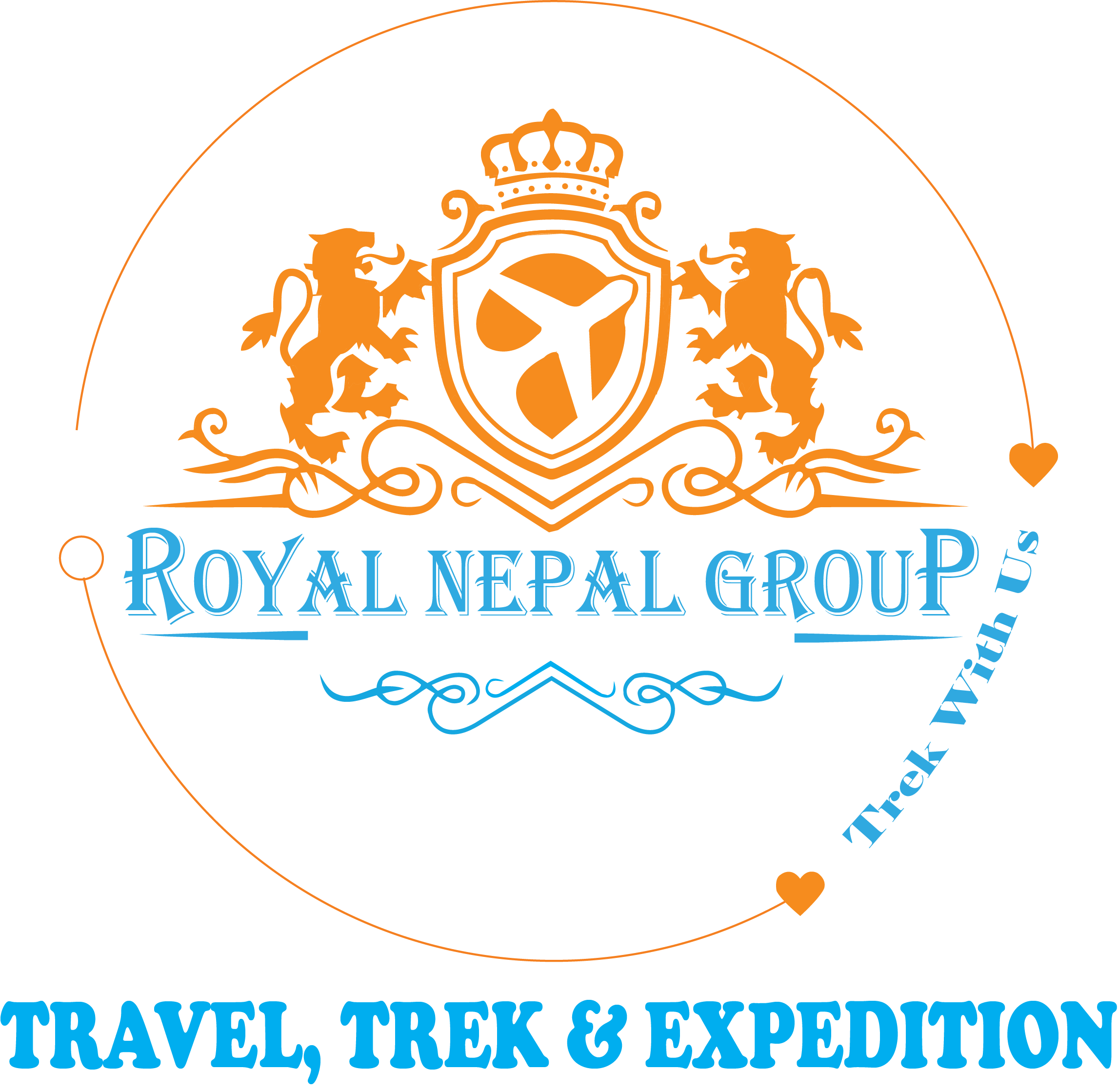
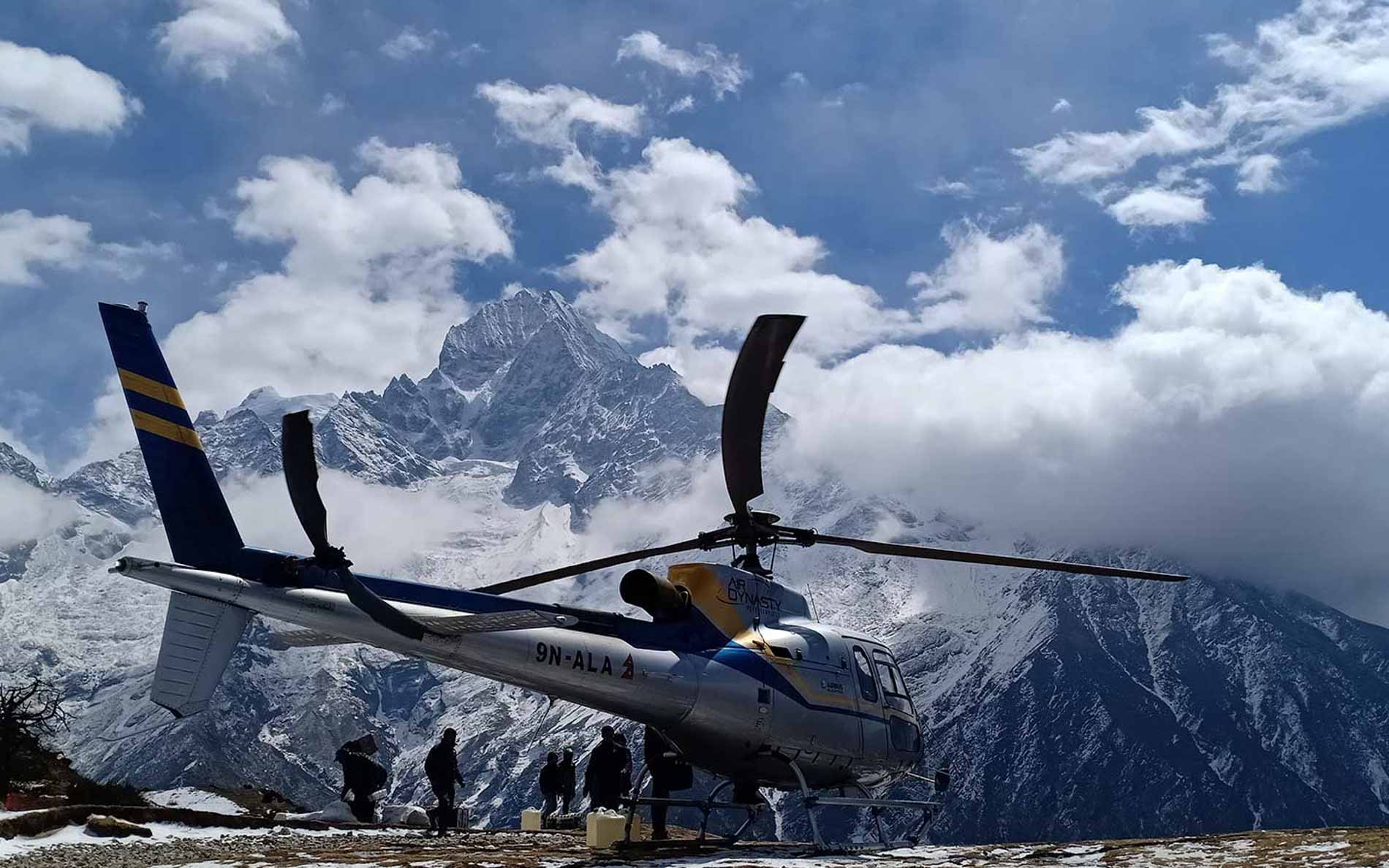
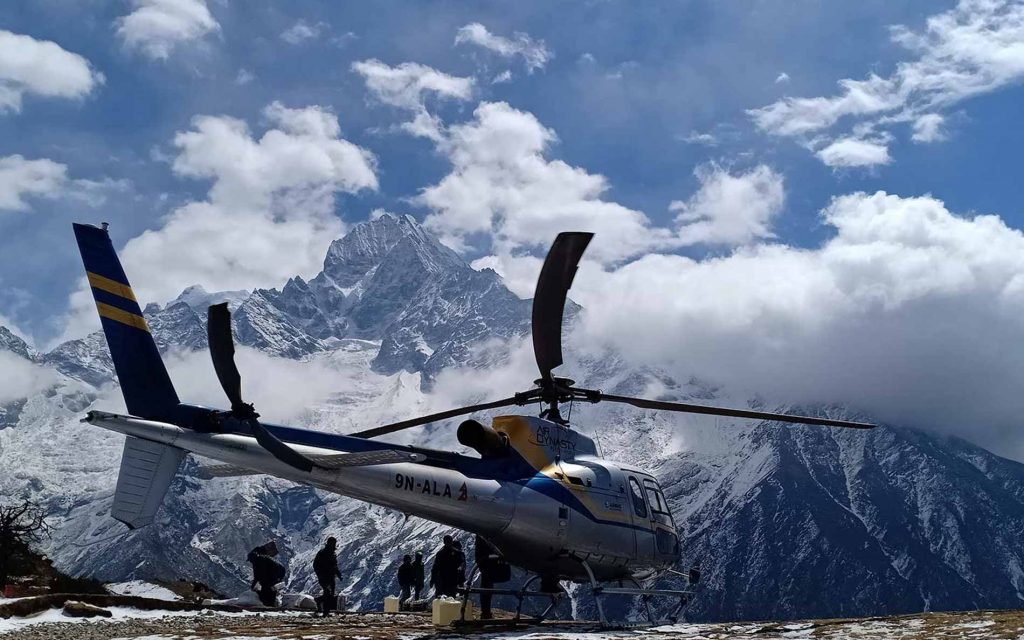
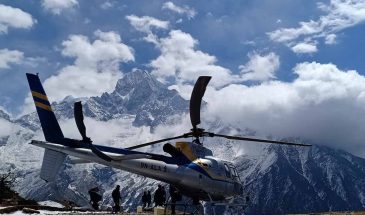
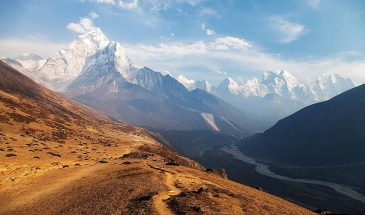
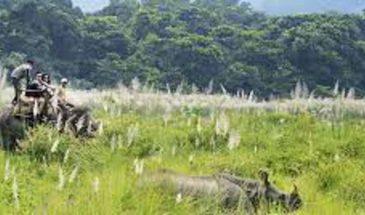
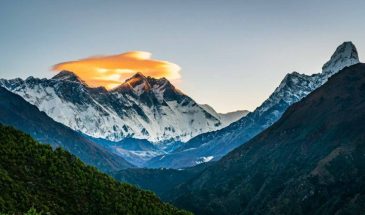
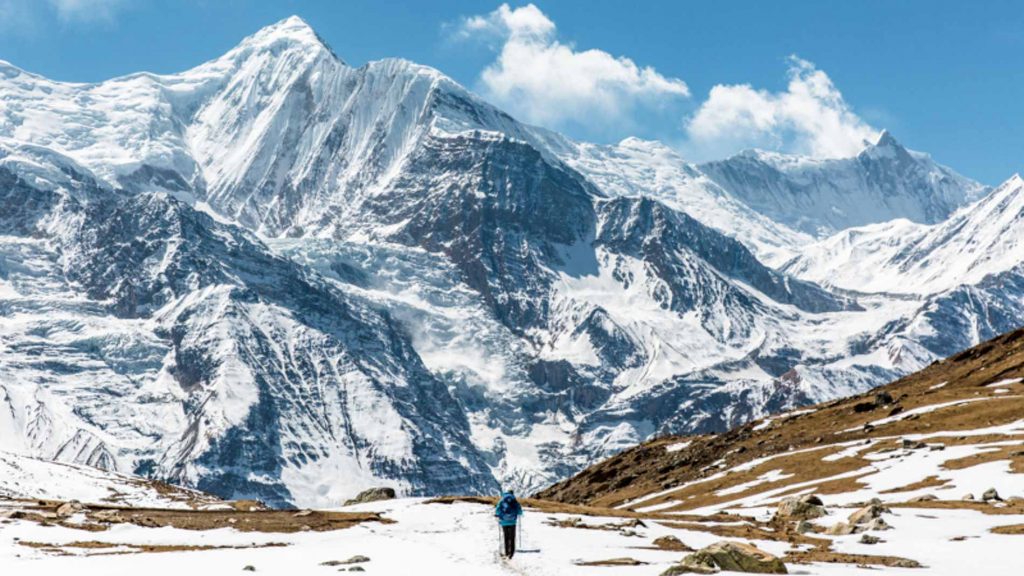
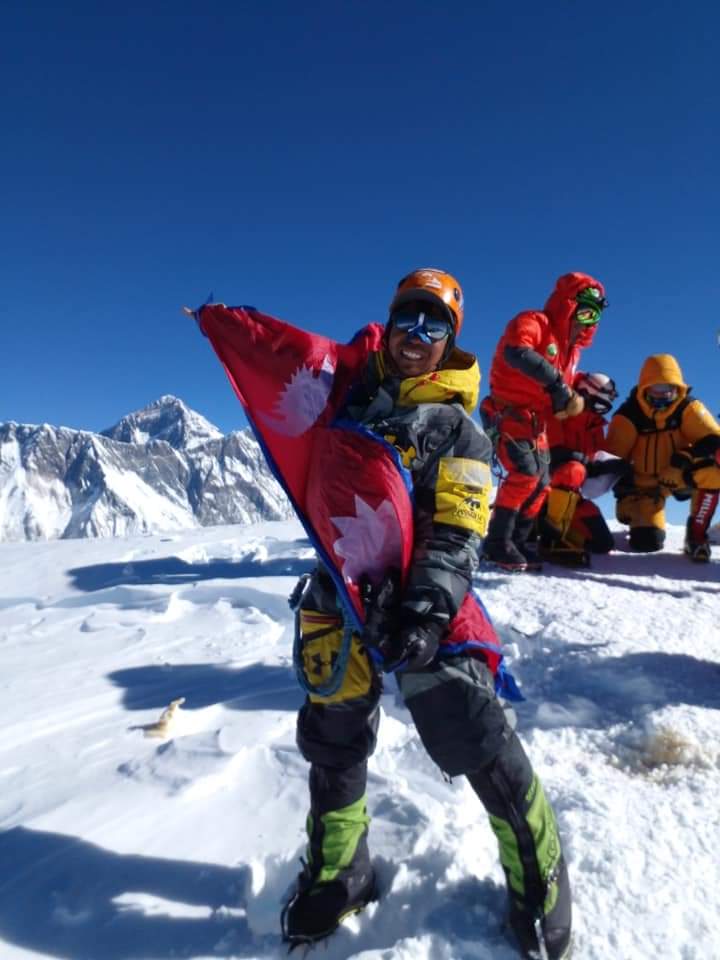

There are no reviews yet.